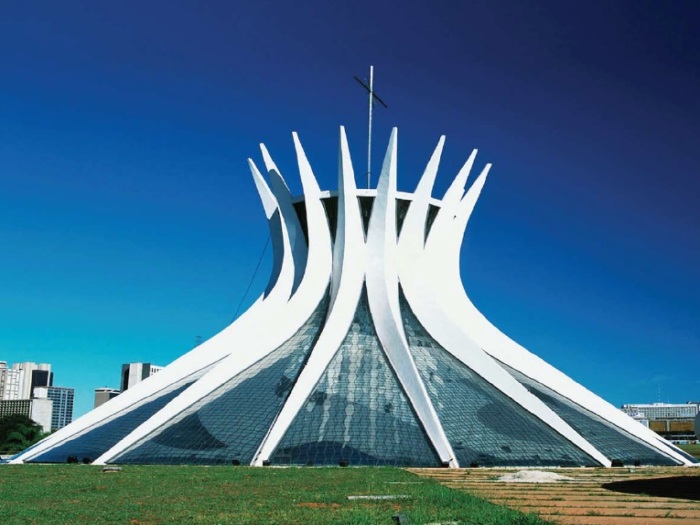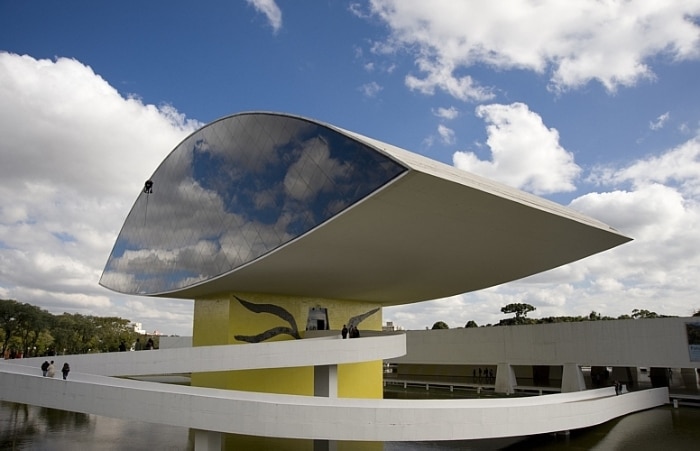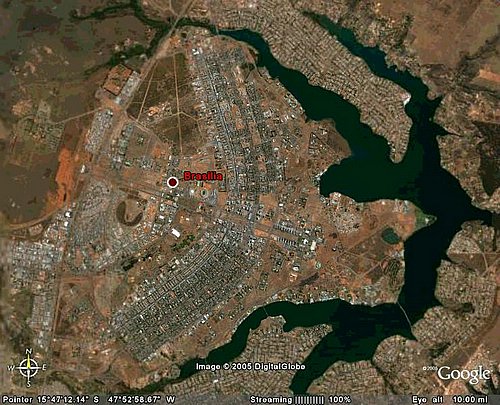The earliest music came out of Ouro Preto in Minas Gerais, the
cultural capital of Brazil during the colonial days. The native peoples in the
northern rainforest areas used a variety of whistle, flutes, drums and rattles
in their music, and the Jesuits who were there introduced the bow (for string
instruments) and the clavichord (an early keyboard instrument). Probably one of
the most famous Brazilian classical composers was Heitor Villa-Lobos, who was
active from about the late 1920s to the late 1950s. He wrote many pieces for the guitar.
With roots in Rio de Janeiro and Bahia, samba is most
associated with Carnival. Traditionally,
samba used only string instruments and percussion, but after WWII, it
incorporated the brass and woodwind instruments that we are now more familiar
with. Samba has its roots from African slaves who were from the Bahia area. As
they traveled to other cities in search for work and such, they came in contact
with other musical styles, and it became integrated into samba as well. As
different regions developed variations based on cultural influences and merging
it with other styles, different types of samba emerged. By the late 1930s, a
style known as samba-exaltação was what caught the international eye, with
Brazilian actress Carmen Miranda bringing samba’s prevalence to Hollywood. Other
musicians associated with samba and its variations include Beth Carvalho,
Cartola, Fernanda Porto, Pixinguinha, Seu Jorge, Marcelo D2 (who often mixes
samba and hip-hop – I just downloaded the album Meu Samba É Assim which is such a great album), Banda Black Rio
(samba-funk), Olodum (samba-reggae), among others.
Bossa nova is actually a mix of samba and jazz that became
really popular in the 1960s. It’s still considered part of the canon of jazz
repertoire. In contrast to samba’s roots, bossa nova grew from Rio de Janeiro’s
upscale beach neighborhoods. One of the most identifying features is the bossa
nova rhythm in 4/4 time: [enter graphic ] The song that brought bossa nova to
an international recognition was Stan Getz and João Gilberto’s “The Girl from
Ipanema” in 1964 (most notably known with Astrud Gilberto on vocals). Some of the more famous bossa nova musicians
include Chico Buarque, Bebel Gilberto, Tom Jobim, Sérgio Mendes, Elis Regina,
Caetano Veloso, Charlie Byrd, and Gal Costa. Because of its similarities, there
are many musicians who perform both samba and bossa nova.
There are certain instruments that are key to Brazilian
music. The most identifiable sound would be the cuíca. The cuíca is a type of
friction drum, where the drummer changes the pitch by changing the tension of
the drum head to produce a type of squeaky sound. It’s named after a type of
small opossum that makes a similar sound and used a lot in samba music. Other
percussion instruments from bass drums to tambourines to homemade percussion
instruments are used; many of which have ties to African instruments. Flutes,
guitars, the piano, and other modern instruments are also widely used.
MPB stands for Música Popular do Brasil. It is more or less
an urban style of music that relied on mostly non-electric types of music, but
incorporated a lot of folk, folk-rock, rock, bossa nova, pop, and jazz. Many of the themes include some kind of
criticism towards social justice and governmental issues. Chico Buarque and
Elis Regina are among the key leaders in the MPB style. Other musicians include
Milton Nascimento and Djavan (I tried to get my husband to name our son Djavan,
but he wouldn’t go for it.)
Brazilian rock really got started in the 1960s and 1970s
with a group called Os Mutantes and others, and by the 1980s and 1990s became
commercially mainstream and branched out into other styles of rock such as
metal and punk. Most Brazilian rock has a very mainstream Western sound to it
as several American and European rock bands became international sensations. However,
there is also a fusion between rock music and samba or bossa nova, giving it a
distinctive “Brazilian” feel to it. These days, many MPB musicians cross over
into the rock category as well as styles merge. Some of the popular ones
throughout the years – and I have many of them in my own collection – are Barão
Vermelho, Kid Abelha, Jota Quest, Skank (the first CD I actually paid full
price for in Brazil, pronounced like “skunk”), Chico Science & Nação Zumbi,
Sepultura, CSS, Tequila Baby, Ultramen, O Rappa, Charlie Brown Jr (one of my
absolute favorites!), Planet Hemp, Raimundos, Adriana Calcanhoto, Tribalistas
(comprised of Marisa Monte [whom I named my daughter after], Carlinhos Brown,
and Arnaldo Antunes), CéU, and Nando Reis.
Dance in Brazil varies with region and is certainly based on
the cultural background of that region as well. The northern areas have dances
that can be tied back to traditional African dances. The southern gaucho dances
have more European influences to their dances. One of the most popular types of
dance that is associated with Brazil is capoeira. It’s like a mix of martial
arts and dance developed from African slaves and Brazilian natives. Capoeira is
characterized by choreographed punching, wide leg sweeps, flips, and take downs.
It was developed as a way for the slaves to practice extreme fighting styles,
but was never performed without music, masquerading it as a dance rather than
martial arts. Traditionally, the capoeira “band” (called the bateria) instruments
include three berimbaus (a single-string percussion instrument with a bow), two
pandeiros (a type of hand frame drum with metal jingles, similarly made to a
tambourine), one atabaque (tall, wooden hand drum), one agogô (like a double
cowbell), and one ganzá (a shaker or a rattle). In the US, capoeira is becoming
popular among martial art schools and college campuses.
Up next: the food



































